Last year in October, I got the opportunity to travel to Chile to work at Paranal and also visit Cerro Armazones, which is the site of where the Extremely Large Telescope (ELT) will be located. This post will not be about TwinCAT which I usually write about, but will solely be about this trip, simply because the trip was amazing and I need to share my experience/thoughts about it.
I’m currently working as a software engineer at ESO for the ELT-project. When I was asked whether I wanted to go to Chile I didn’t even need half of a PLC-cycle to answer “YES!”. As I’ve lived in the city for the last 35 years, I’ve basically forgotten how a really good night sky looks like. To go from the awfully light-polluted skies of Munich and Stockholm to one of the best night skies in the world was like a dream coming true.
I would go to Paranal to sit at the control room of the Very Large Telescope (VLT), but also visit Cerro Armazones which is the construction site of the ELT. My home during this stay would be no less than the ESO residencia/hotel, which is a place I’ve wanted to visit ever since I saw this amazing building in the movie James Bond – Quantum of Solace. I already knew that I would never be able to visit the hotel as an ordinary tourist but would first either have to become an astronomer or an engineer at ESO. Some working colleagues also told me that it’s possible to use a 16-inch telescope at the residencia called UT5. The four main domes of VLT are called UT1 to UT4, so that is fun, I think.
The flight first went from Munich to Madrid, and from there all the way over the Atlantic ocean to Santiago. In Santiago ESO has something called the ESO Guesthouse, where everyone that travels have a possibility to stay for a night or two before continuing to Paranal or Chajnantor (site for the Atacama Large Millimeter Array, ALMA).
After the stay at the ESO guesthouse we took the flight from Santiago to Antofagasta, which is the closest city with an airport to Paranal. I got the recommendation to sit on the right side of the airplane as I would then be able to see Paranal and Cerro Armazones. This was an amazing sight to see, and I could not wait until I was there!
At the Antofagasta airport an ESO-bus was waiting for us that took us straight to Paranal (approx. 2h drive). The bus was the most comfortable bus I’ve ever been on. Most of us that were sitting on the bus were people that work at Paranal. They have a rolling scheme where they live/work at Paranal for a certain time, and then go home to rest.
In Paranal it struck me how absurd it was that this place exists, in the middle of the desert close to the top of a mountain. There was a billiard table and pingpong table, a restaurant, a swimmingpool, a music room and much more. The roof of the hotel has a huge parasol which can be extended during the night to cover the whole roof to minimize the light pollution of the night sky.
When I got the keys to my room, I was instructed to always lower the blinds in my room so that no light would escape the room during the night. This was also the case while driving the car during the night, no lights other than the parking light was allowed. On the keys to the room there was a small torch which was the only light I could use outside of the hotel during the night. Paranal consists of several parts. One part is the residencia/hotel where all astronomers and engineers live. Then there is another part which consists of housing for all non-ESO personnel, and here we also have a hospital, storehouse, a building for doing the re-coating of the mirrors, a sports facility and much more. The food was fantastic and three times a day I could go to the restaurant where you could take whatever you wanted. There was salad buffet, fruit buffet, a great selection of main dishes, different sorts of fresh fruit, sodas, a big selection of deserts and much more. The restaurant was simply fantastic! The third part was obviously the VLT and VLTI.
I could probably write a book just about the residencia, it’s truly an amazing building and I couldn’t have had a more comfortable stay. If I’m going to try describing the feeling I had about the place it’s related to a moment of when I watched my first sunset there, surrealistic is the closest word I can come up with that correctly describe the feeling I had about it. It simply didn’t feel as a real place. Here, in the middle of nowhere, humans have designed and constructed these buildings and instruments to study the universe. The pictures I took can’t reproduce the experience I had, but at least give an indication of how it was being there.
You get your own room and there are a few rooms for the people living there and working in shifts. As a shift worker you have a possibility to bring your family there for a few days. In other words, you don’t need to be an engineer or astronomer to live in the residencia, you just simply need to get married with one.
In the shower you got a reminder to not waste water, as water in Paranal is an expensive resource as all of it must be delivered there from Antofagasta. Water is a luxury and three big trucks need to drive several hundred kilometers every day just to satisfy the water demand for Paranal and therefore it’s easy to understand that every liter of water is worth quite a lot. I never spent more than 15 seconds with the water on in the shower every day. There was however no (technical) restriction on having the water on for a longer period of time but thinking that a liter of water there probably cost as much as a liter of gasoline in Sweden it was reasonable to try to minimize the waste. The air humidity varied between 1 – 10% the nights I was there, and I constantly felt thirsty.
The first night in Paranal I had a hard time to fall asleep. Everything felt unrealistic and I couldn’t quite understand I was there. I accepted I wouldn’t be able to fall asleep, so I went outside from my room to watch the stars instead. A thin sweater and jacket was enough to go outside in the quite chilly temperature. No cameras, no equipment. Just my eyes and my brain. Time just passed as I was outside, and I looked at the starry sky for hours. There were hundreds of thoughts in my brain. It was the first time I looked at the southern hemisphere and it was a magnificent experience to see the Magellanic clouds. It felt weird to see Orion upside down. It was in the middle of the night, pitch-black and completely silent. Just me and the universe. I’m not in any way religious, and I know it was just chemical reactions in my body but for a short moment I felt such a strong connection to the universe.
Each Sunday there was a barbecue outside the residencia. The grill master grilled different types of meat (there were alternatives for vegetarians as well) according to ones wishes, which felt very luxurious. This comfort brought the disadvantage that I gained weight. Some of the days I went to the gym to try to compensate this, but there I immediately noticed that I was at almost 3000 meters altitude. You simply didn’t have the same capacity as back home. The sport center didn’t just have a gym but also a squash-room and a big room for basket/football. I can imagine that the people that are living in Chile and working here appreciate this. I was thinking about this when I got home, that the only things you basically did in Paranal was work and eat, work and eat, and so it went round-and-round. This sport center was a good complement to that.
I was told that a good way to get exercise in Paranal was to take a walk from the ESO residencia to VLT. This meant that you could either take the car up to the top of the mountain, or a quite thin road called the “star walk”, which takes around one hour from the residencia to the VLT. I took this walk every day to (partially) compensate for my unhealthy habits with the food. On this walk I got some amazing views of the area and the best description of the feeling I got when walking there was that it felt like being on Mars. If you just for a moment imagine that the sky isn’t blue the picture might have well been taken by the curiosity rover. When I was walking there all alone and I couldn’t see the residencia nor the VLT I felt like Matt Damon in “The Martian“.
I spent most of my time in the control building for the VLT. This building is next to the telescopes and inside of it is a control room.

Control center for VLTI
As the control center is next to the VLT on the top you’ve got a fantastic view next to it.
The control room is divided into several sections, one for each main telescope (four in total, UT1..UT4) and one for VLTI. Each telescope can make observations independently of the other. Next to the control of each telescope there was a team of astronomers and it was a very enjoyable experience to spend some time with them. Plans had already commenced for which part of the building would be used for the control of the ELT which will be 100% remote controlled. There will not be any ESO residencia/hotel next to the ELT, but instead all infrastructure in Paranal will be extended to host the control of the ELT. This was one of the main reasons that Cerro Armazones was selected as the site for ELT, simply because it’s so close to Paranal and therefore it’s possible to share the infrastructure, and therefore keeping the costs down.
To finally see VLT live was truly fantastic, and it felt unreal to finally see how big it is! Another memory that stuck to my head is how surprised I was over how quiet the VLT is. Even though I was only three meters from the telescopes when the dome rotated, I could barely hear it.
Except for UT1..UT4 and AT1..AT4 there was a half dozen smaller telescopes which were used for various purposes on the mountain. I did see a 10-inch or 12-inch telescope as well, which is what I’m used to using as an amateur astronomer. Everything is 100% automated (roof rolling off, telescope control etc).
At every night before the night’s observations would start, there was a gathering where everyone could meet to see the sunset, which is as I understand a “ritual” that has been around since the beginning of the VLT. There is a special platform that you can stand on for the sunset, and the view was simply amazing! I didn’t miss a single sunset. During one of the sunsets there was an astronomer that brought some sort of specially built telescope to watch something called the “green flash“, which you (under optimal conditions) can see for a few seconds during sunset. With this telescope, the astronomer projected a picture of the sun on a disc, and with high expectations I looked for it with half a dozen other spectators. Just as the sun had almost set, we all burst in joy and said, “There it is!!!”. It was clearly visible, but a short moment later it was gone.
One of the nights I got the opportunity to witness the opening of one of the VLT UTs, but from the inside, which happens some 30 minutes before sunset. On the way to the UT we noticed how the shadow of Paranal almost perfectly aligned with Cerro Armazones (build site for ELT). I knew that Cerro Armazones was close to Paranal, but it is a great experience to see how close it is. In the two pictures below, you can see Cerro Armazones as the flat mountain at the horizon. The picture is taken from VLT/Paranal. Cerro Armazones felt like an unnatural addition in the landscape considering how flat it was. It will be a mighty view when ELT is finished and sitting on top of the mountain.
To finally see one of the VLTs from the inside felt unreal (just as everything else at Paranal). It was truly huge, and I felt very small. The opening of the VLT is a process consisting of several steps. There is one thing I remember clearly, and it was when I was standing on one of the platforms inside the dome and the telescope started to move. It felt like it was the platform I was standing on that rotated, but in real life it was the dome around me. It didn’t matter how much I tried to tell my brain that it was the dome and not the platform that was moving, my brain simply interpreted all the information as the platform moving.
One of the days we took a half day to visit the construction site of the ELT. In the current phase of the construction the construction site is formally handed over to a contractor, which means that any guests (including ESO personnel). After doing some health checks and doing a safety introduction, we were handed over some safety clothes. The safety of everyone on the construction site was taken very seriously at the ELT. Chile is responsible of the construction/maintenance of the road to the ELT, and it was very clear this road was brand new. It’s obviously a necessity to have a good road to the construction site for the further construction of the ELT. At the site itself a considerable infrastructure was already on place. There was accommodation, a hospital, a restaurant and much more for the build workers. I got a chance to talk to some of them and I’ve never seen such a proud team of people. They knew very well what an important instrument they were building, and they were proud of being a part of it. On the top of the mountain there was a temporary road around the complete construction site, so that all visitors could have a look. During most of the time I walked around this road with my jaw being dropped, because I constantly thought about how HUGE this site was. The telescope will simply be ginormous! I think that I felt this more than other people because of my background as software engineer, as everything I do is not something that is physical and can be touched. The software I develop is nothing you can see, and it’s just “supposed to work”. When everything you do every day is to develop this software which is this magical thing that will be somewhere inside the telescope you kind of forget what kind of instrument this software will actually be used for. Even though I work with software that is close to the hardware, the software is still going to run in some electrical cabinets. Now I had the opportunity to zoom out from all the details I’ve been working with and get some perspective. This really struck me with full force. Did I mention that the ELT is going to be HUGE?…
Even if the days were quite long and I was quite tired after them, I together with a colleague decided to try to do some astrophotography during a night. Unfortunately, this night it was supposed to be full moon (not optimal from an astrophotography perspective because of the bright moon), but the moon was supposed to settle around 03.00 in the night local time, so we went to bed and set the alarm at 03.00. We met on the backside of the residencia outside my room. I only had a GoPro, a simple DSLR and my phone camera with me. It was great fun the whole night!
One of the nights we decided to use UT5, which is a “small” telescope that anyone in Paranal can use for personal amusement. For any amateur astronomer reading this, it’s a 16-inch Schmidt Cassegrain telescope, so from an amateur perspective it’s still quite big. It was a 3/4 moon which is far from optimal from an astronomical perspective, but we thought we could at least look at the planets which are not as sensitive to light pollution from the moon. For the first time using UT5 it’s necessary to get an induction from someone that has used UT5 before. There is a mailing-list for UT5, and after sending an e-mail to this we got a response from an astronomer that promised to guide us. Initially the guide told us he would just show us how to operate the UT5 and then leave, but we had such fun time he stayed with us for several hours. Everything in the observatory was fully automatized, including the automatic rolling off the complete roof of the building. You just pressed a button and a short moment later you could start using the telescope. Unfortunately, it was almost full moon and on top of this it was quite cloudy. Deep inside me I laughed a little bit as I thought that it didn’t matter where in the world I was, as soon as I wanted to do some amateur astronomy the clouds followed me – even in Paranal! Anyway, we looked at several of the planets in the solar system. Mars was basically straight above our heads, which as a Swede I’ve never experienced. The view I got of Mars from UT5 was the best one I’ve ever experienced; it was so sharp and clear. Even though the magnification was very high the picture was still bright and sharp. We had interesting discussions for hours and it was just a great night that I’ll never forget.
It was an unforgettable experience to go to Chile. It was hands down one of the best trips I’ve done in my life and I couldn’t be happier I got this opportunity. Some of the memories I have from there will stay with me for the rest of my life.

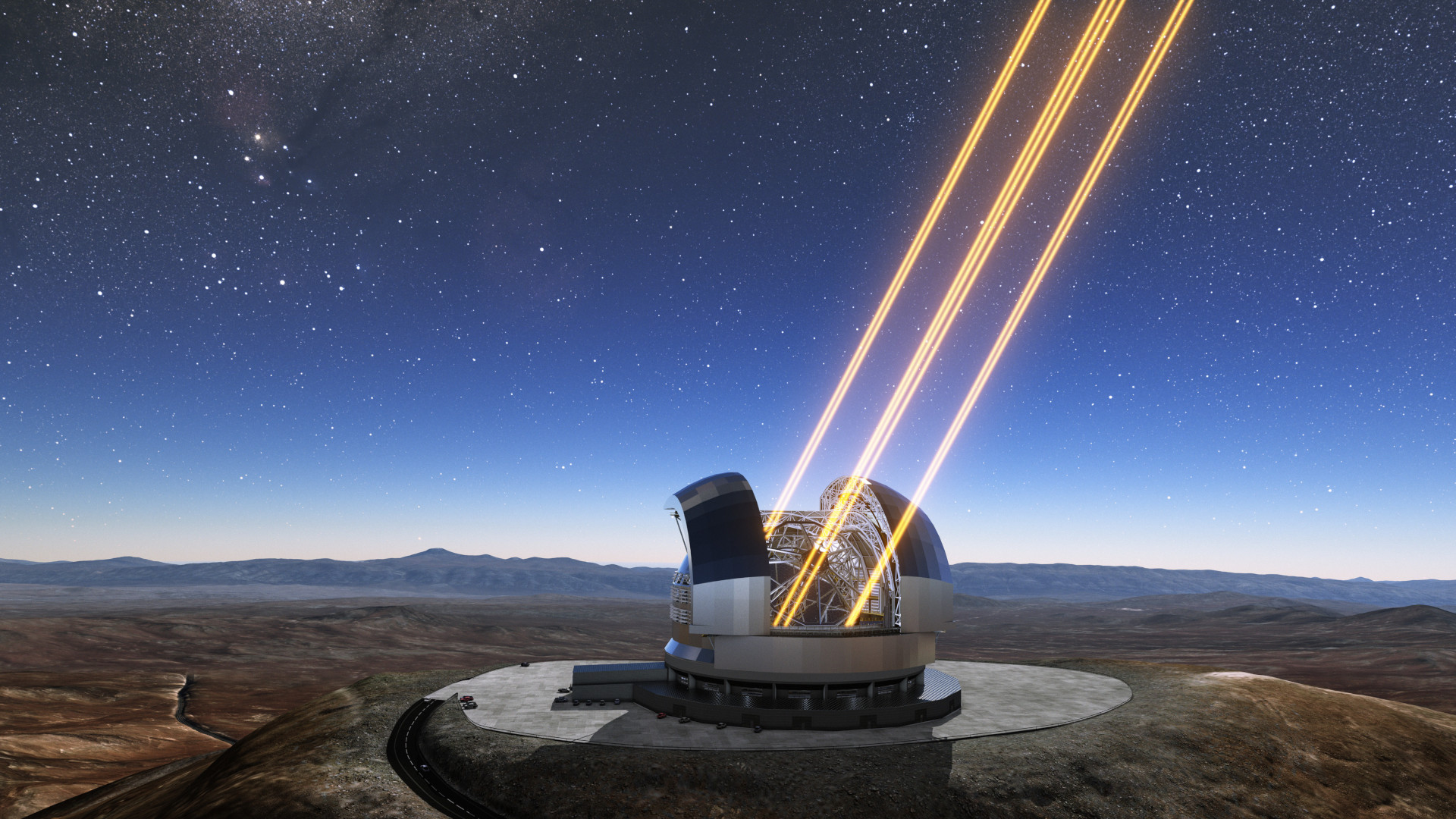
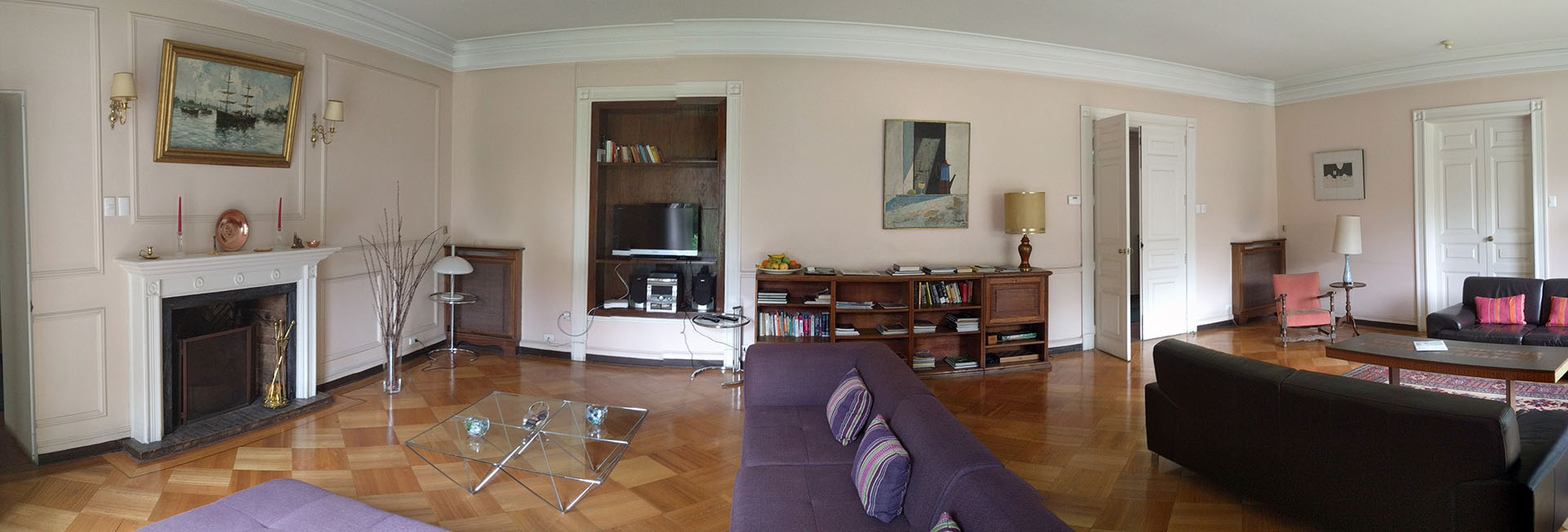
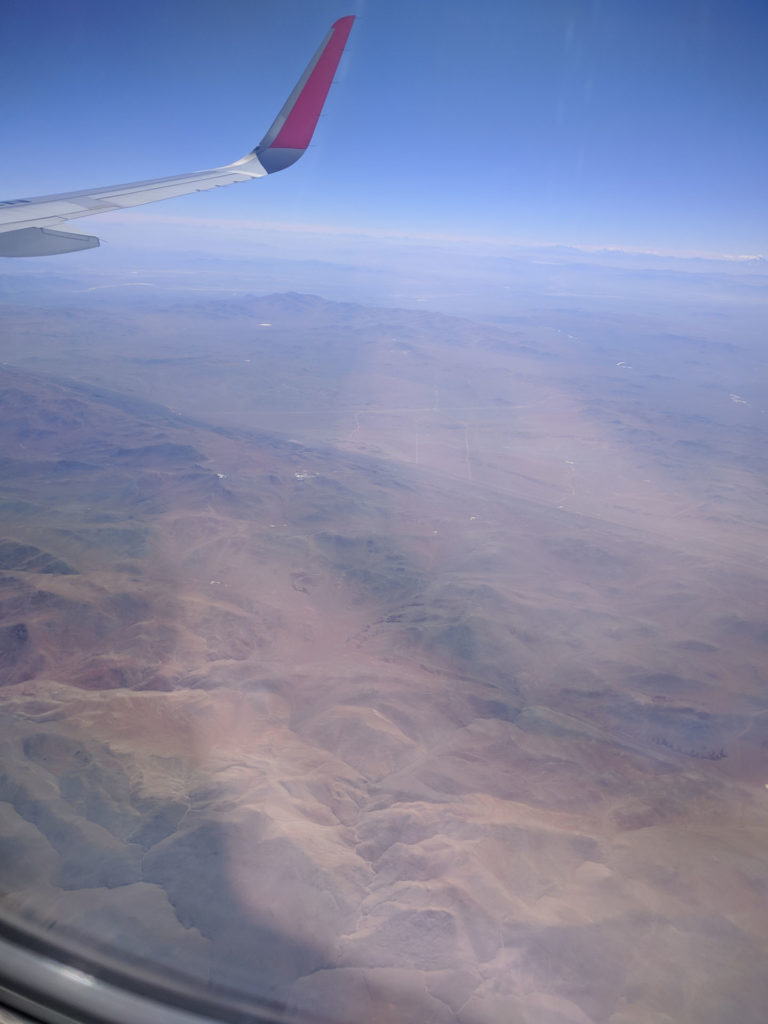

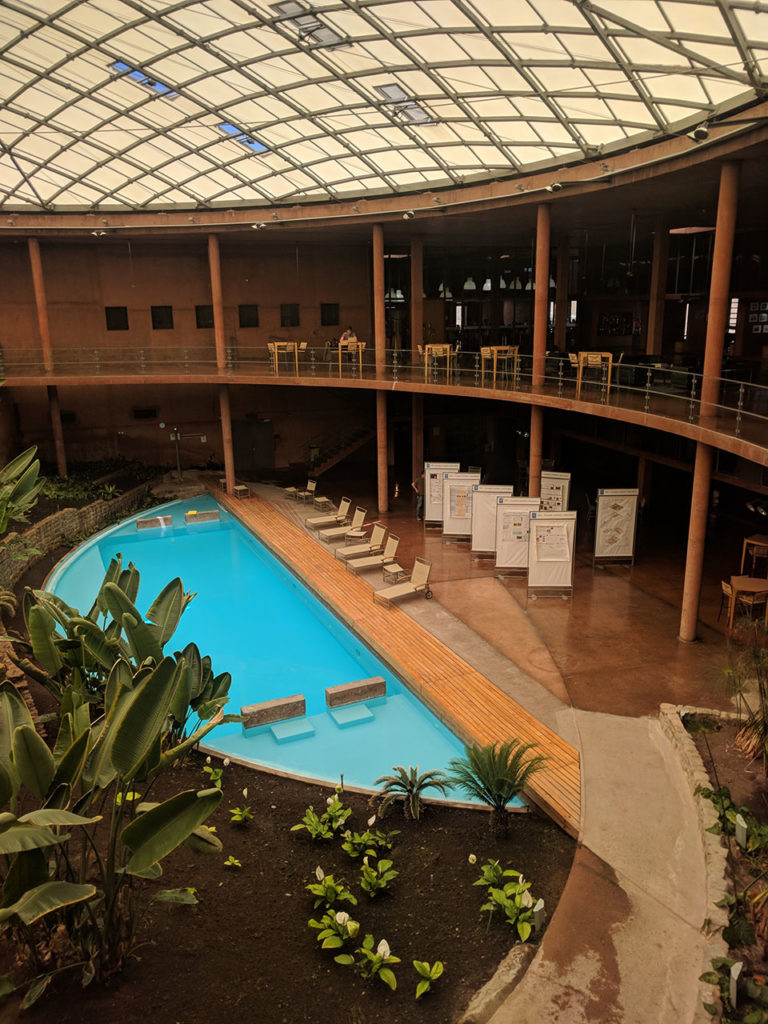




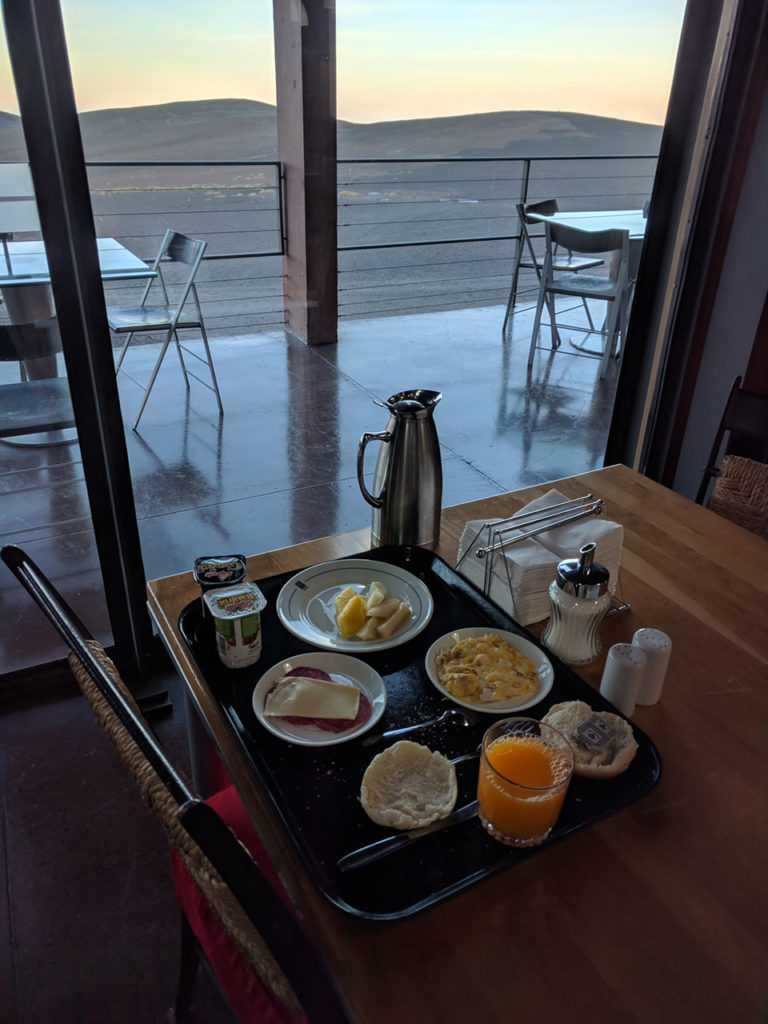


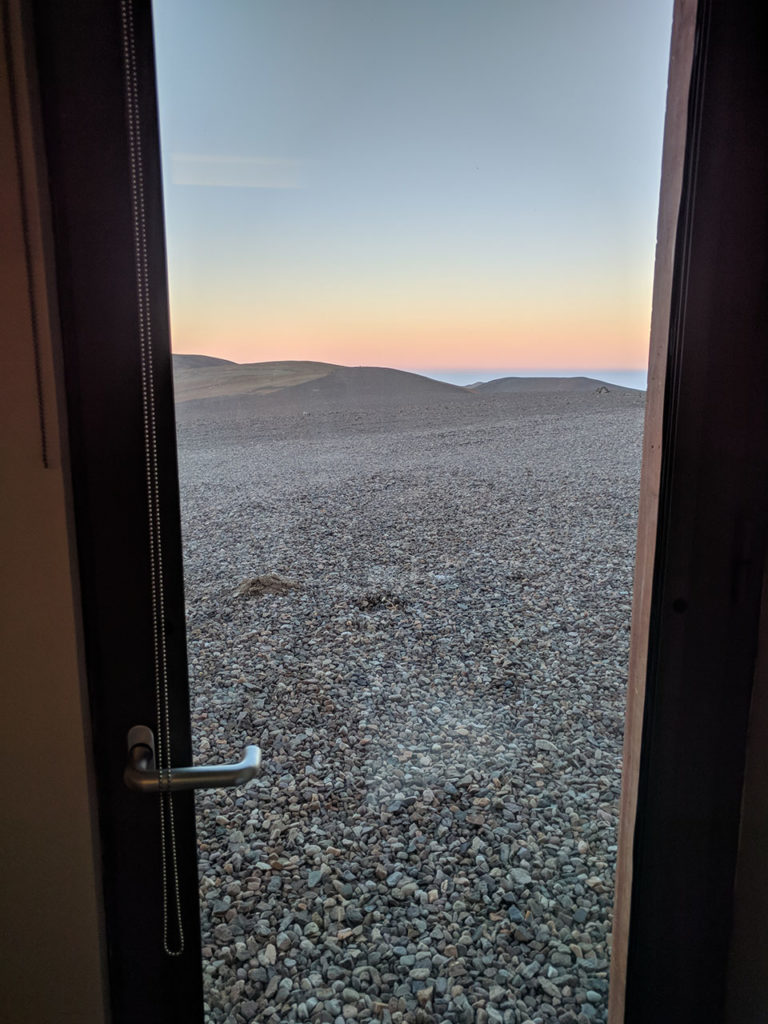





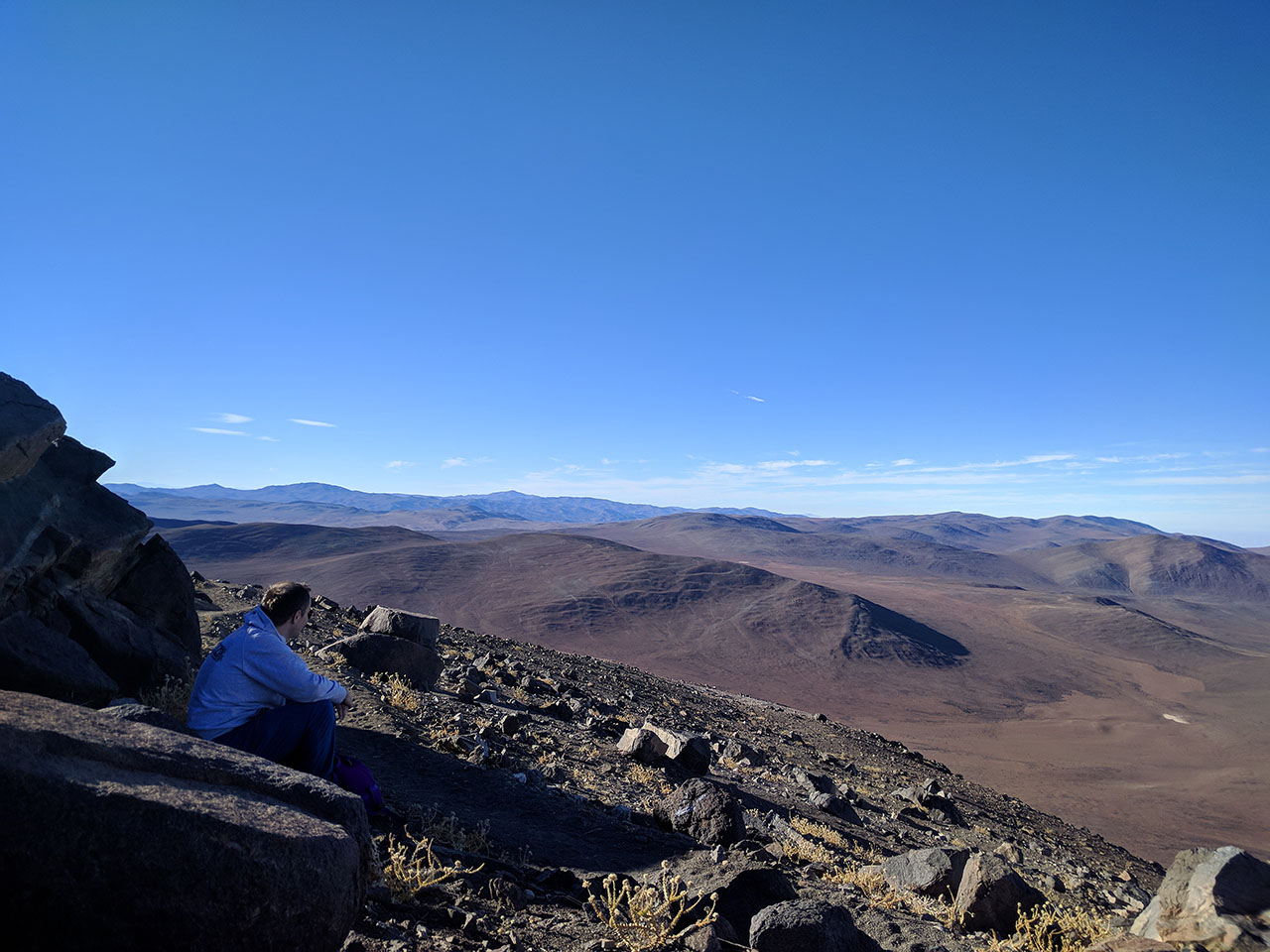

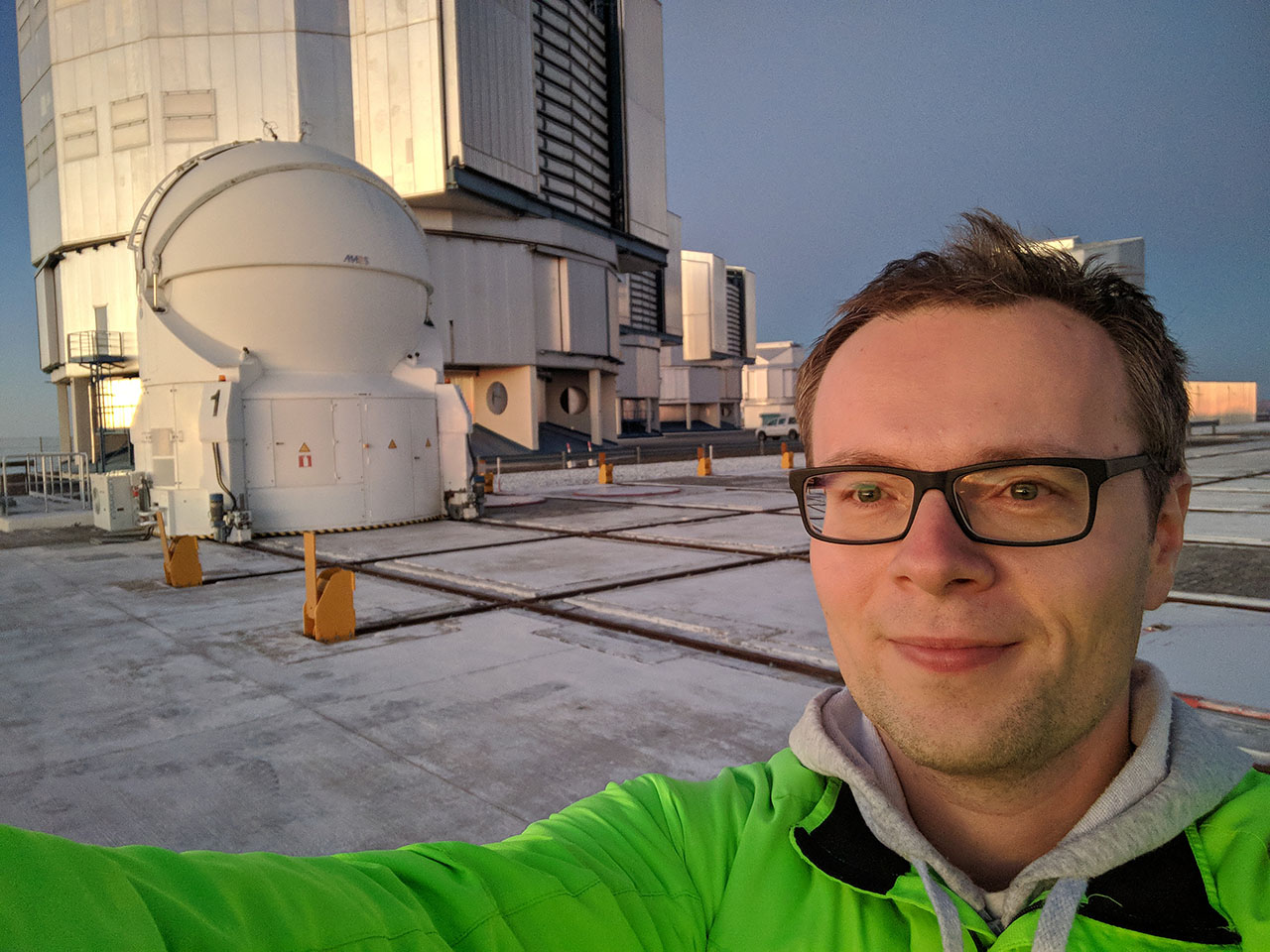


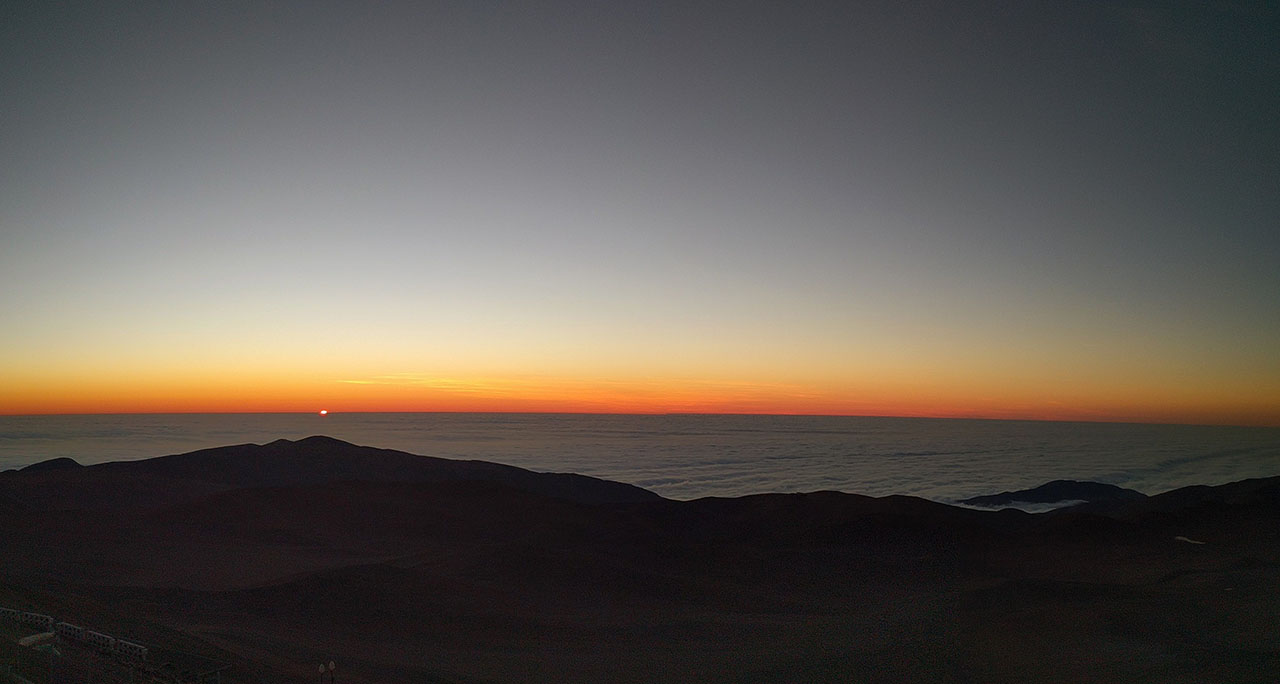

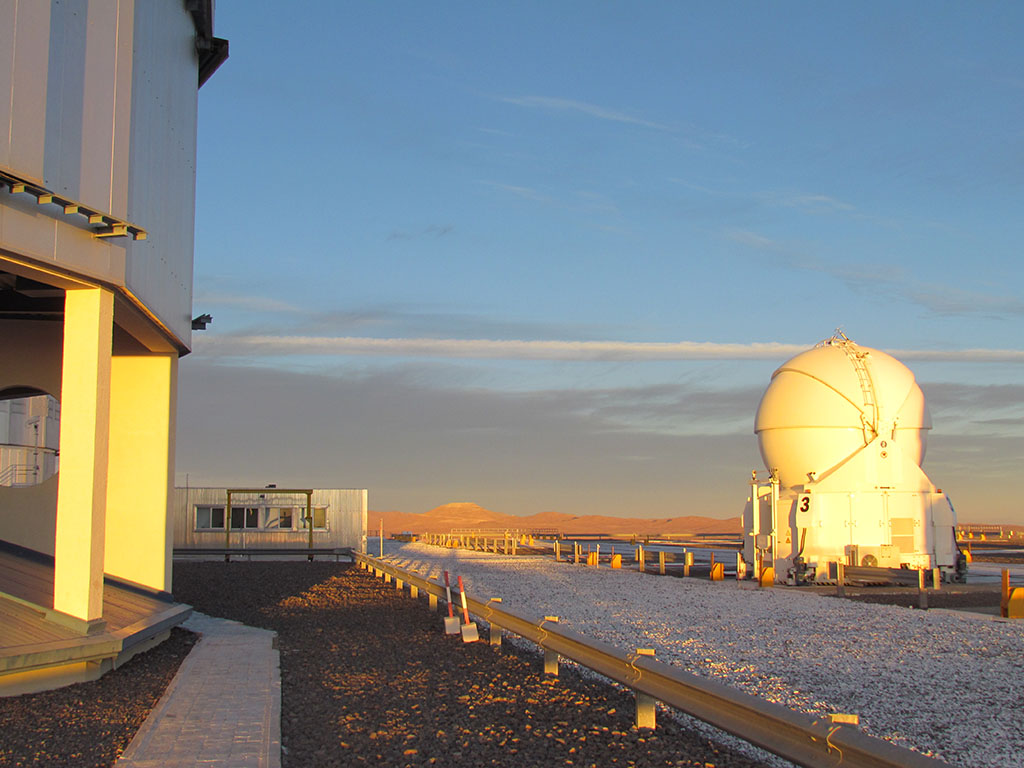

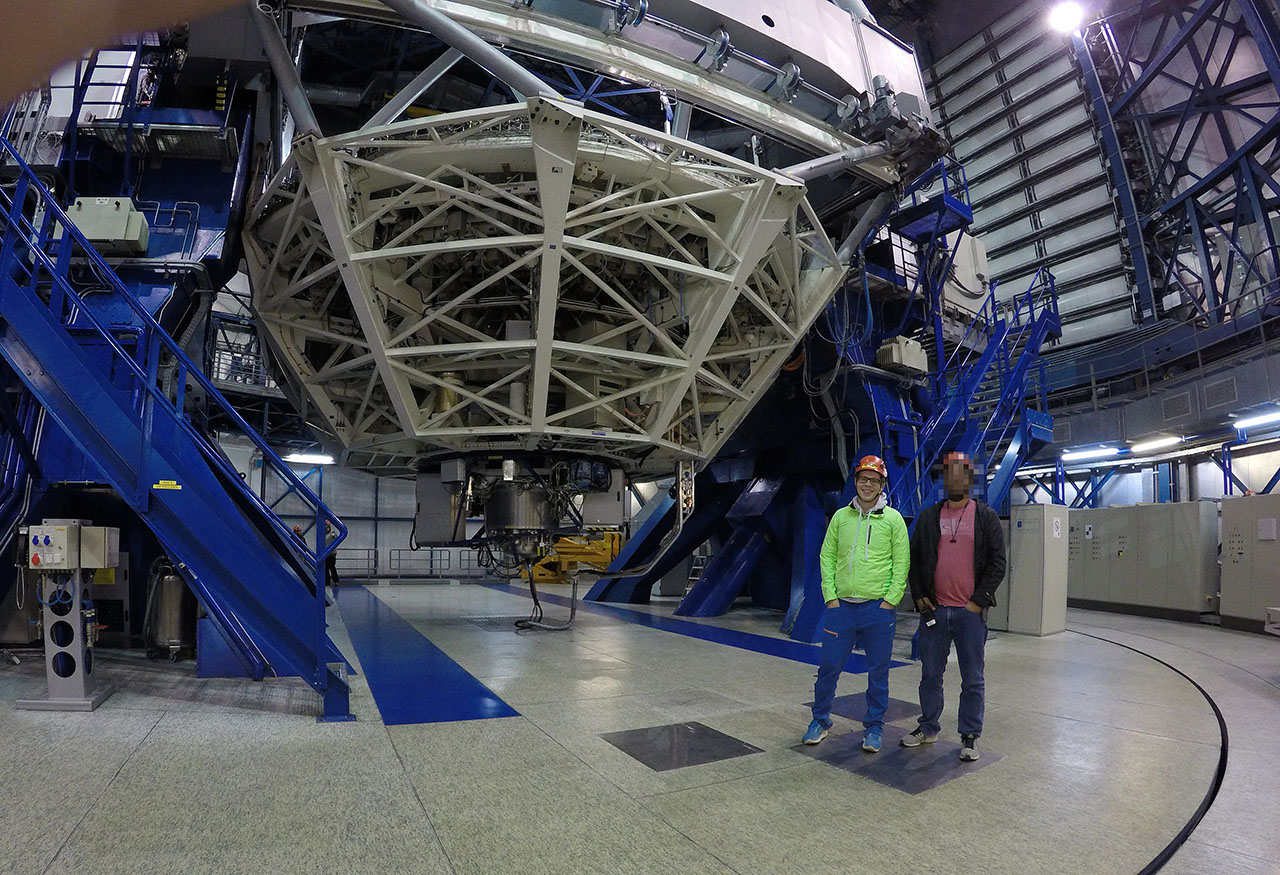



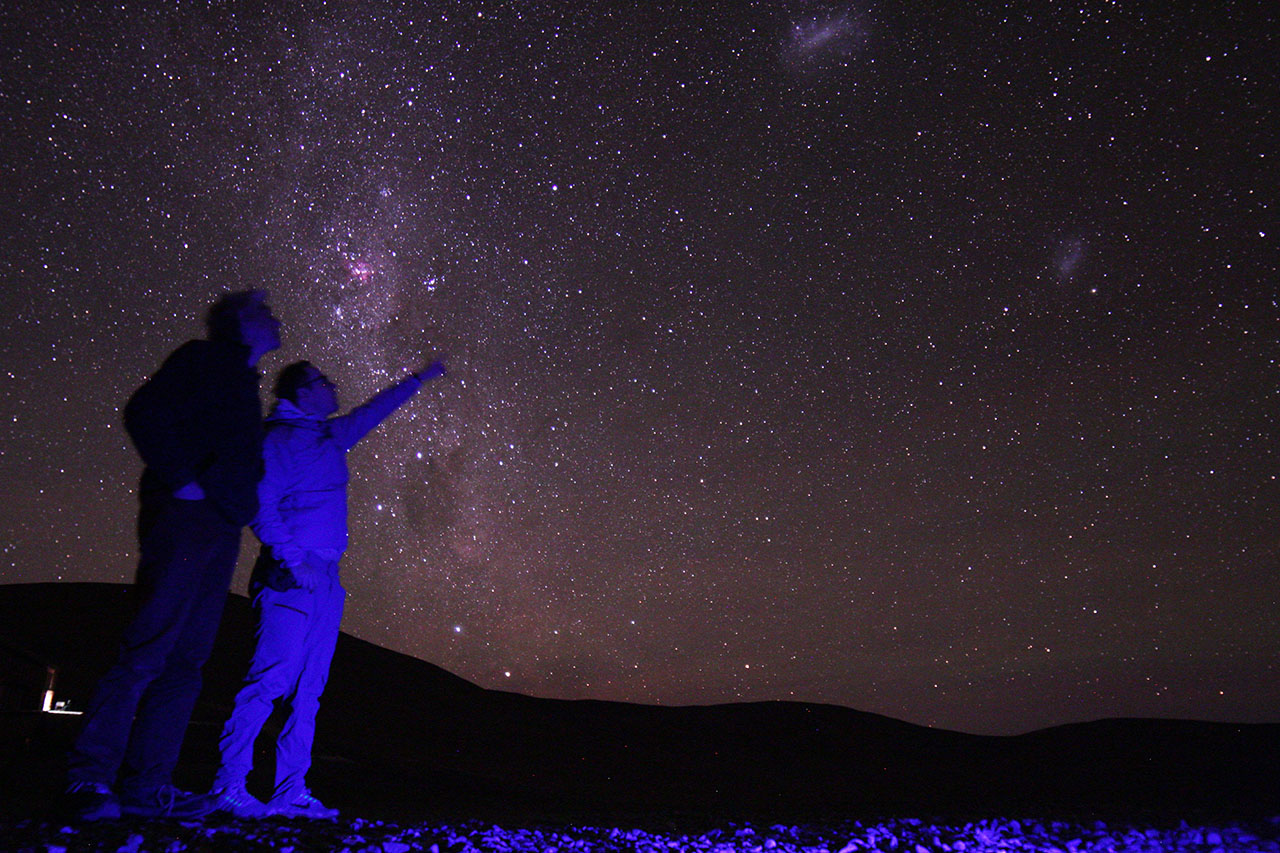


If you taking requests for future content, i would like to add error handling, whats the smarts way of doing that with twincat3?
Our company is contemplating reworking ours, and beckhoff suggest event logging.
Would be great to know how its being done on the telescopes, where i bet there is a million different types of errors that need handling, logging and reporting.
Looks amazing! Looks unreal!